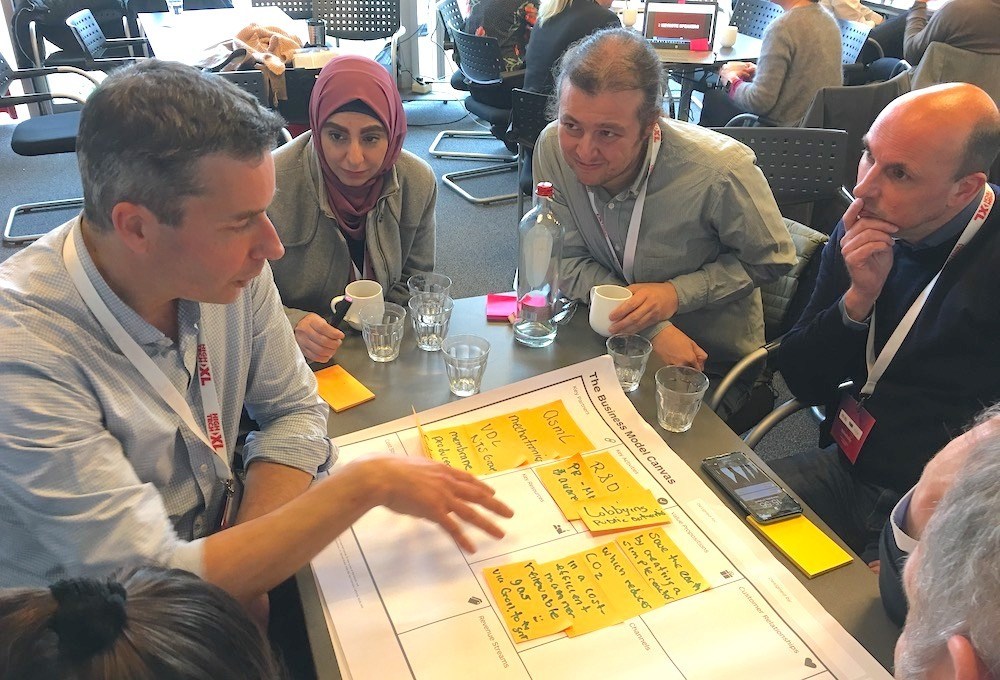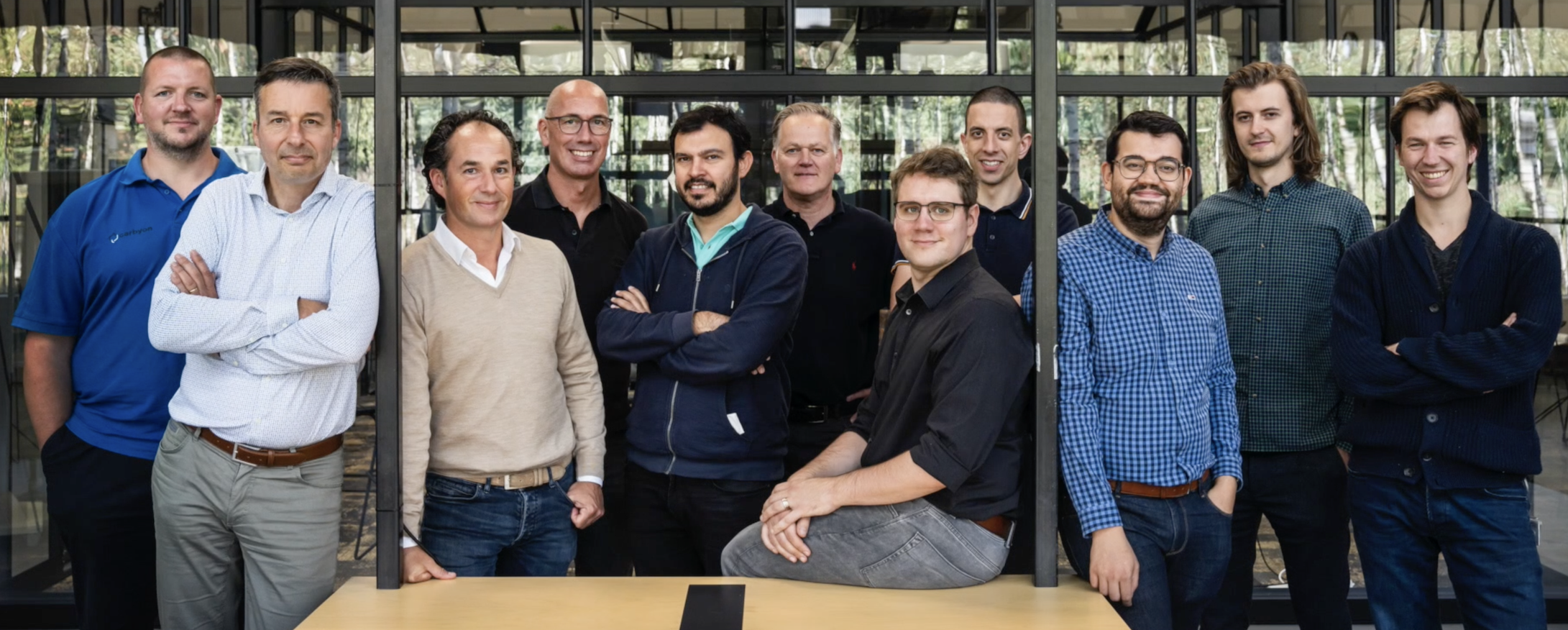Will the buildup of greenhouse gasses and ongoing climate change make our world uninhabitable?
Not if Hans De Neve has anything to do with it.
De Neve and his Carbyon team are tackling perhaps humankind’s biggest challenge – how to capture CO2 in the atmosphere built up from centuries of burning fossil fuels.
This is a fast-growing industry, but Carbyon has a competitive advantage – an efficient, less costly and more easily deployable device for carbon extraction.
Carbyon employs advanced materials developed in the semiconductor industry … and Hans is the inventor.
In a now-or-never global scenario with global temperatures approaching the threshold for dangerous warming (+1.5 Centigrade), 2022 promises to be Carbyon’s year.
Climate change was not as front-of-mind as it now when De Neve came to HighTechXL in 2019 from TNO after inventing the technology that is now Carbyon.
As Hans pointed out in a recent interview, the undeniable effects of climate change are increasingly – and undeniably evident – in melting glaciers around the globe, Greenland’s disappearing ice sheets, extreme weather across the world and other phenomena that even skeptics can’t deny.
“So, suddenly, it’s like, ‘Whoa, what’s happening? This is happening much faster than what people had predicted in the past,’ ” he said. “Scientists are surprised by the speed of change, which is taking place. And it’s hard to predict what’s going to be next. “
“Everybody knows that this will have consequences, consequences which we cannot always predict.”
When Hans discusses Carbyon, the statistics flow.
• The atmospheric concentrations of CO2 have risen to 410 or 420 parts per million today from 280 parts per million 150 years ago. This is entirely due to human activity, including the use of hydrocarbons for energy.
• CO2 that was trapped for millions of years in oil fields and coal seams is being released.
• All that CO2 is responsible for 80 percent of the climate change we see today.
• The European FIT for 55 program is aimed at a 55-percent reduction by 2030. “But then beyond 2030, of course, we need to get to net zero emissions,” Hans said.
• On the positive side, 2050 predictions show that to produce power fuels such as renewable aviation fuel, we need to extract about five billion tons of CO2 from air every year. On top of that, humans will still need to extract about eight billion tons of CO2. That would total 13 billion tons every year.
No number of forests can do that. If you wanted to use biomass to reduce CO2 and produce a new generation of green fuel, it would require an area twice the size of the Netherlands simply to supply Dutch/French carrier KLM, Hans said.
Which is why he’s created Carbyon.
Hans’ route to HTXL was different than most founders. At Dutch research organization TNO, he developed the thin film technology at the heart of Carbyon, so he has a huge competitive advantage in that he knows the technology, he knows the process and he knows how small companies become industry leaders.
But starting a startup has included some profound lessons-learned. Which, in the long-run, make Carbyon stronger – the whole point of an accelerator program.
Hans was still working at TNO in the early days of Carbyon. Along with deep technical expertise in physics and engineering, he had gaps in his knowledge related to the human factor.
While he said he came to HighTechXL to acquire a team, he is candid about his suspicions that starting with a core team might be better than throwing 10 random people into a room around a technology.
HTXL is, of course, a venture builder that takes technologies from world-renowned research institutions such as CERN and the European Space Agency and corporates and builds teams around them. But as with all selective teams, not everyone makes the cut.
Carbyon went through the “harsh process of having to tell some people at this stage, you know, ‘You’re competent, but this competency – this skill – is not relevant at this stage,’ “ Hans said. “Or sometimes it didn’t work out between people from a character point of view.
“So, I remember these early days in particular with respect to team formation as really tough.” By nature, he says, he has a difficult time telling people “you’re a great person, but it’s not gonna work out here.”
Carbyon currently employs 13 people with three from the original team. As attrition set in, he decided to recruit “in the more, let’s say, ‘classical’ way of things, by writing down what we were looking for and then publishing that, inviting people to the team,” Hans said.
There were lots of lessons on the business side as well as HighTechXL staff pushed the team to meet deliverables. It was just like being thrown into the water and learning to swim, Hans says.
They quickly started to understand how much they didn’t know.
“We had this idea about capturing CO2 from air. But to be honest, we didn’t have a clear view of the market, like who’s gonna buy it. And so, being challenged on such topics … that was refreshing,” Hans said.
“We said, ‘Let’s develop the technology. And you know, this is going to be so obvious everybody will want it. But define ‘everybody,’ right? And then we started to figure out okay, okay. Yeah. Who then? Which markets? And when will this market happen? And can we get priority? And is there a beachhead market?
“And so, we were introduced to that way of thinking, which we were not used to.” In business, it’s all about the money, and Carbyon has raised about 3 million euros so far in grants, subsides and convertible loans.
HighTechXL also introduced Carbyon to a higher level of networking with talents at ASML and Philips. Early on, there was a period where Carbyon had a fully dedicated person from Philips for three months and his team also had access to ASML engineers.
That was the reason he came to HighTechXL … to get access to the larger ecosystem. In fact, Hans approached ASML with his technology. “They said, ‘We really like this technology, but do it with HighTechXL.’ In a way, ASML had created HighTechXL for that purpose. And I got into HighTechXL with the idea I would be able to work with engineers from ASML, and that worked out quite nicely.”
At this point, two years after entering the program, Carbyon has plans through 2023.
They include:
• proving the essential components and preparing to build a fully functioning lab-scale prototype
• building an outdoor pilot prototype to test together with an outdoor CO2 storage facility in Rotterdam as well as greenhouses, which need CO2
• a pilot program in Chile that is running tests to use CO2 to make jet fuel
• supplying customers in the desert with one of the byproducts of Carbyon machines: water
The pilots require machines that capture 100 tons of CO2 per year, which is a lot. “But if you think that we are emitting 40 billion tons of CO2 into the atmosphere every year, of course, 100 tons is just a start,” he said.
Hans’s goal is to build Carbyon machines capable of capturing 1,000 tons annually, machines that can be mass manufactured and massed together for efficiency. He points to the auto industry, which Hans said turns out 100 million units every year.
“Our device is no more complex to produce and assemble than a car, so there is no reason why, over time, we could not produce 100 million systems every year,” he said, adding, “We will need to go to that size if we want to have a sizable impact on climate change.
“It’s not enough to produce ten of these units every year.”



